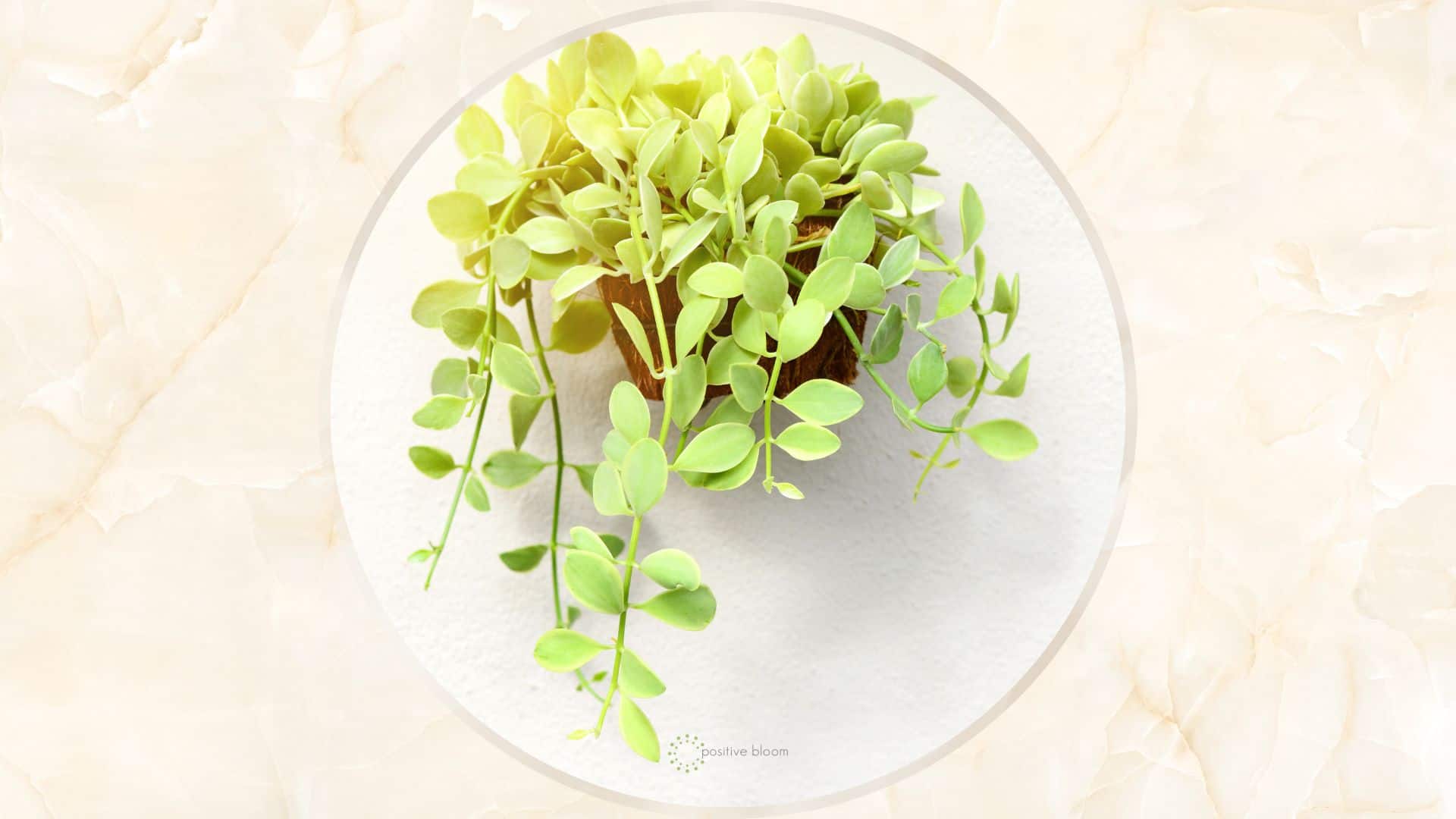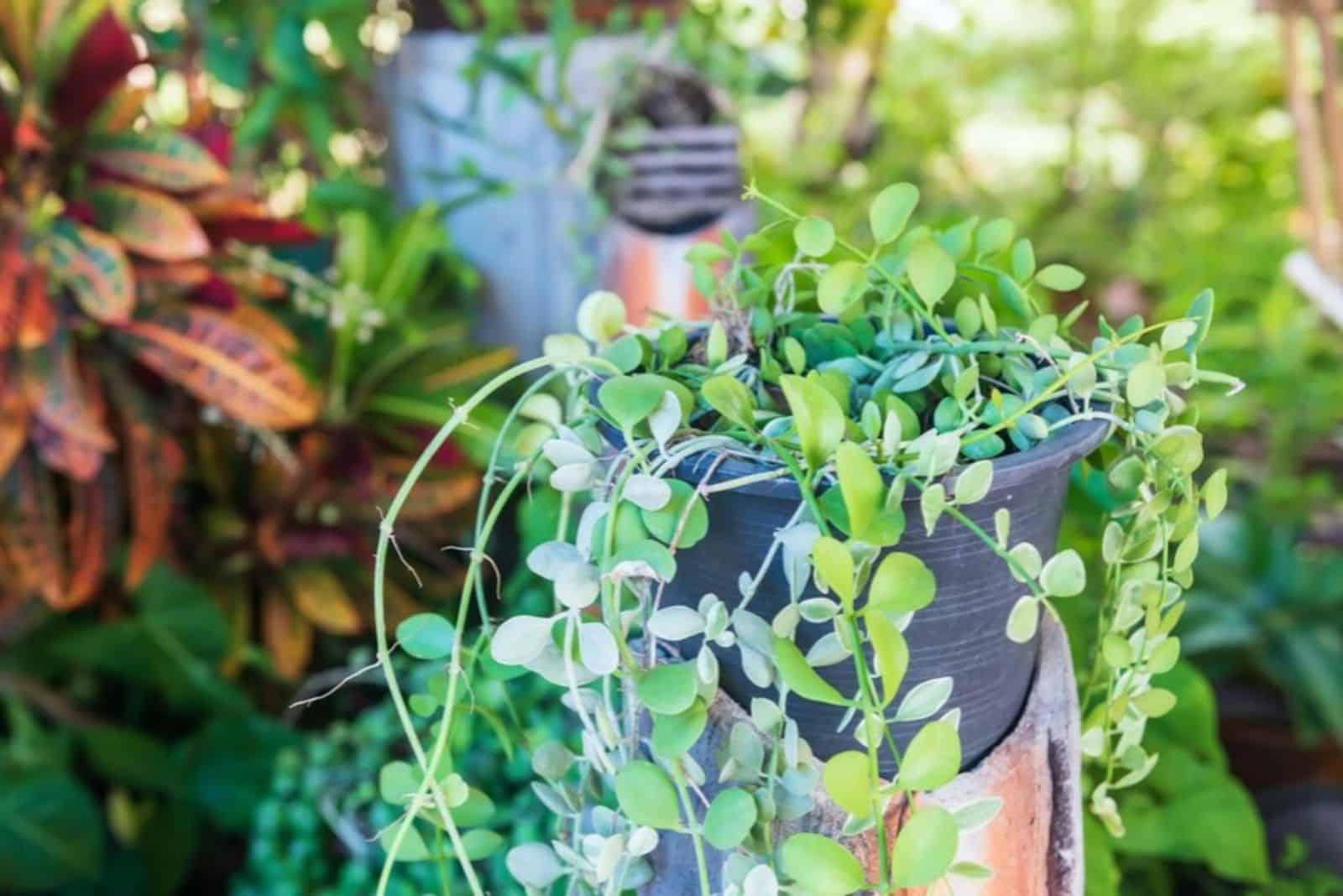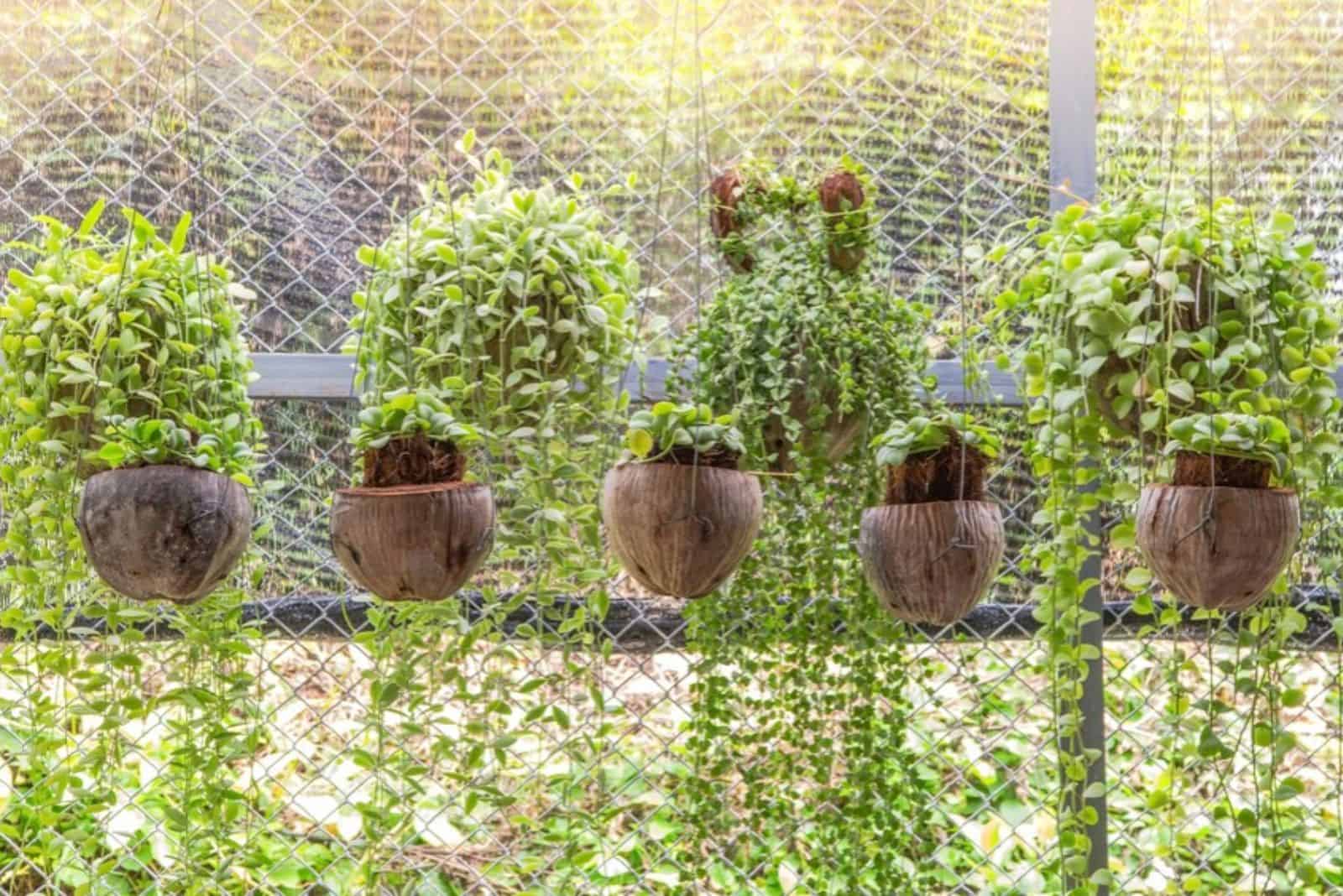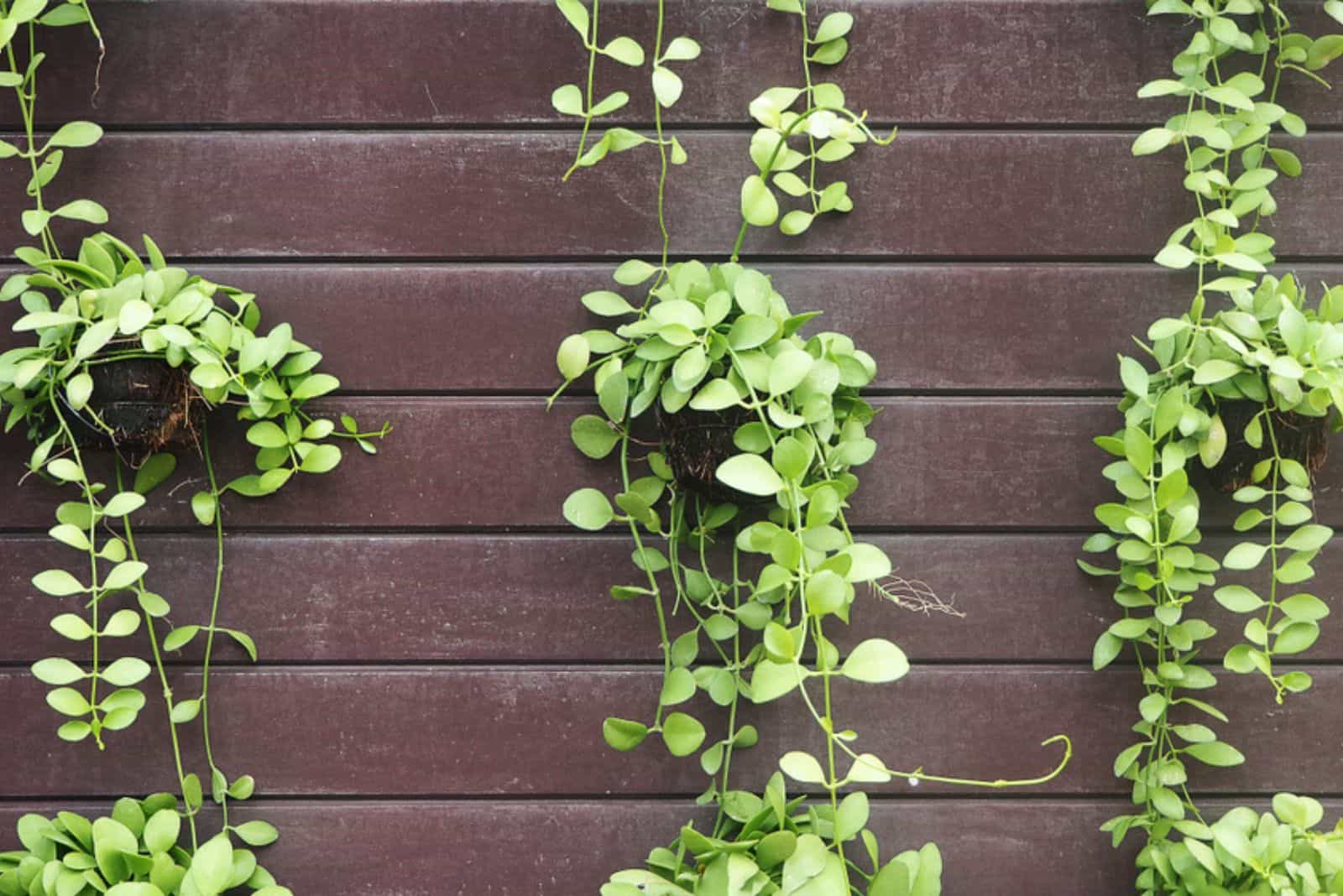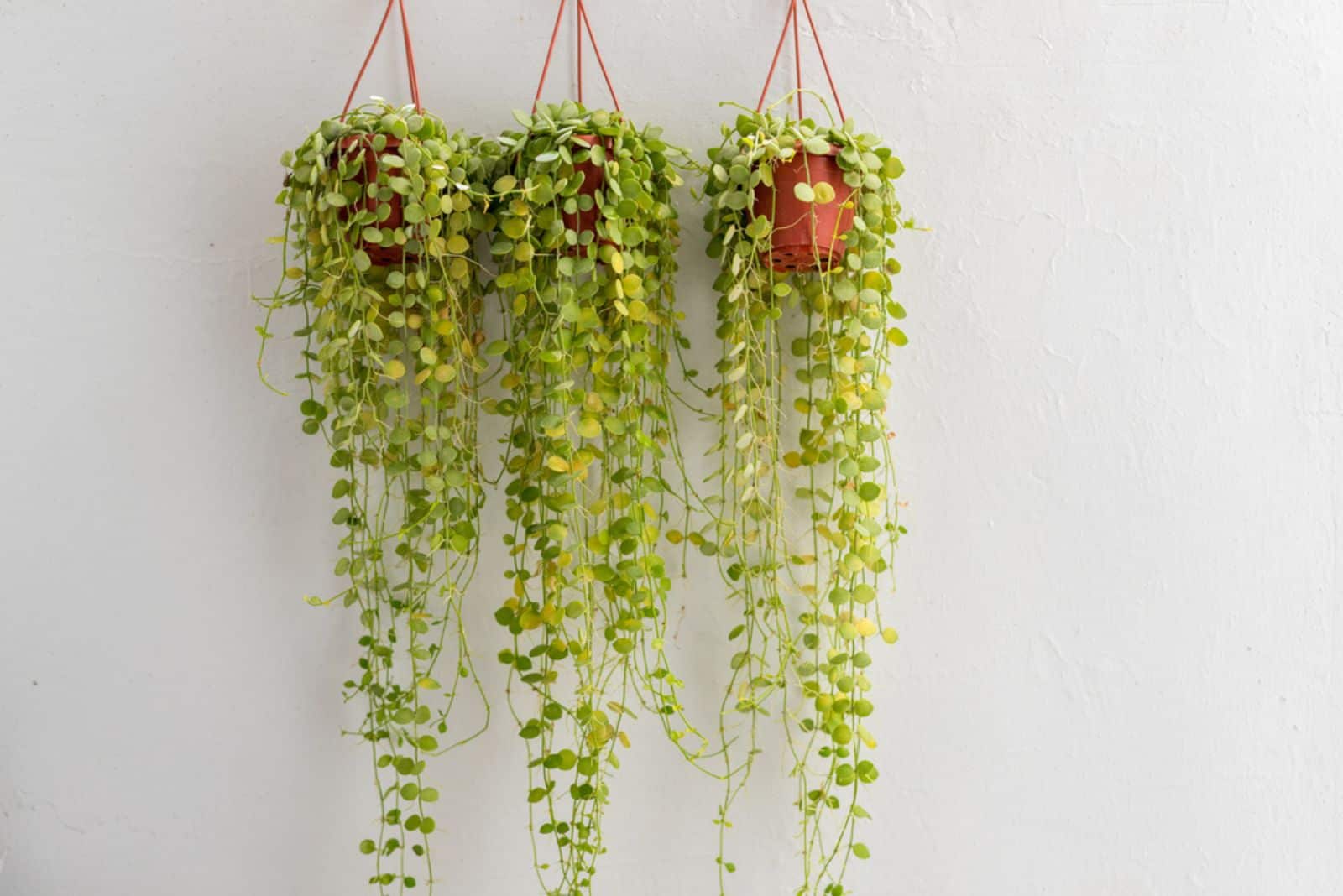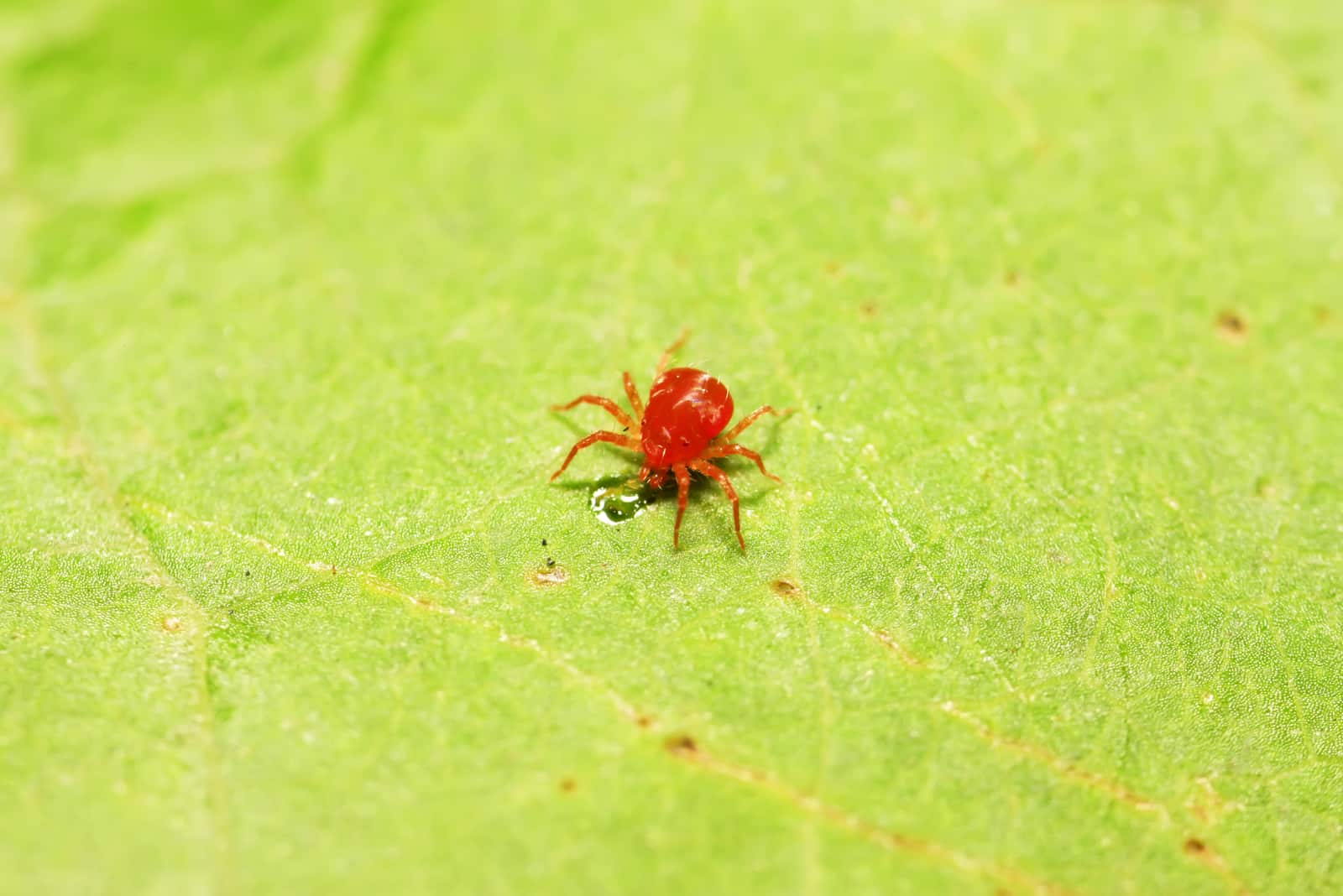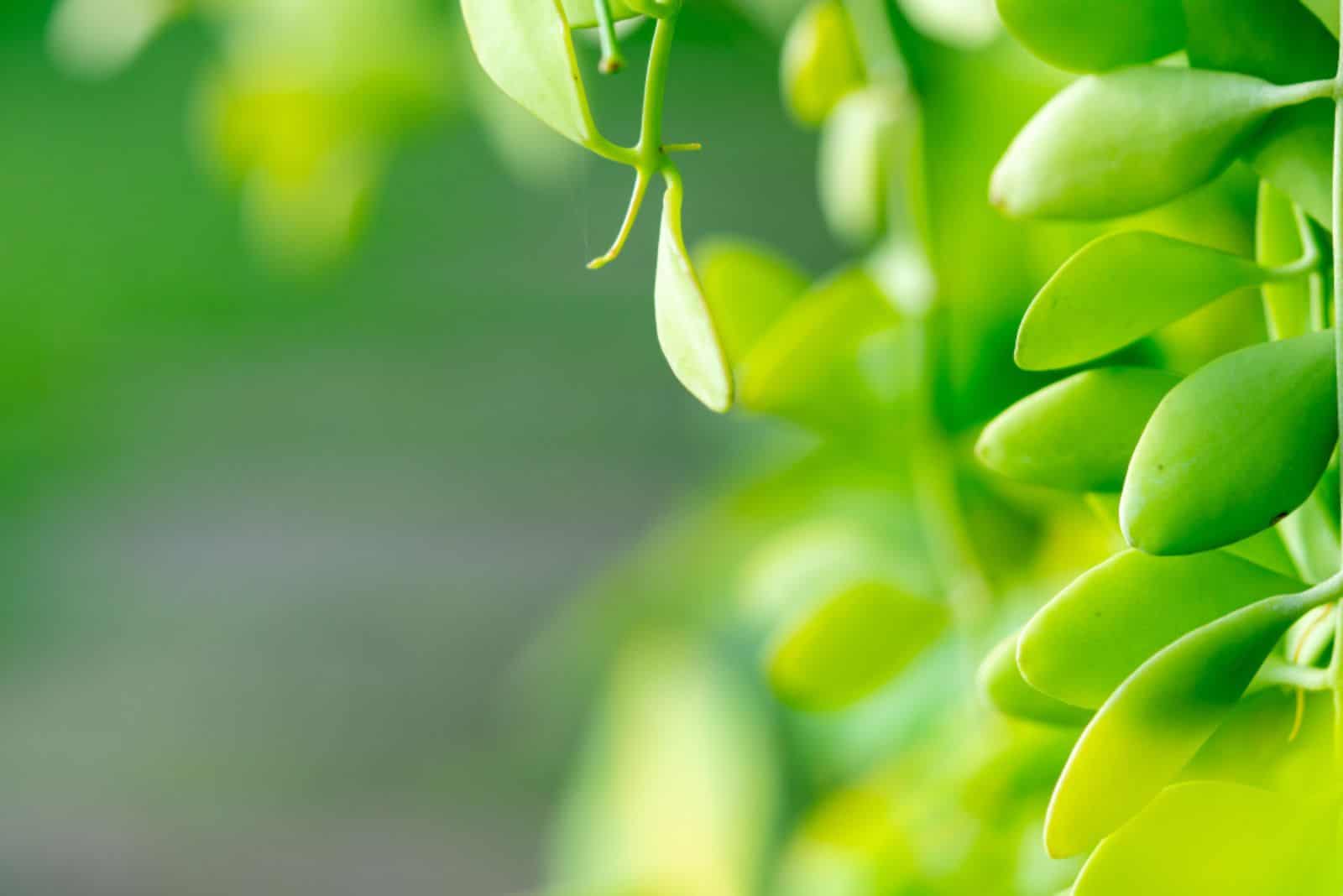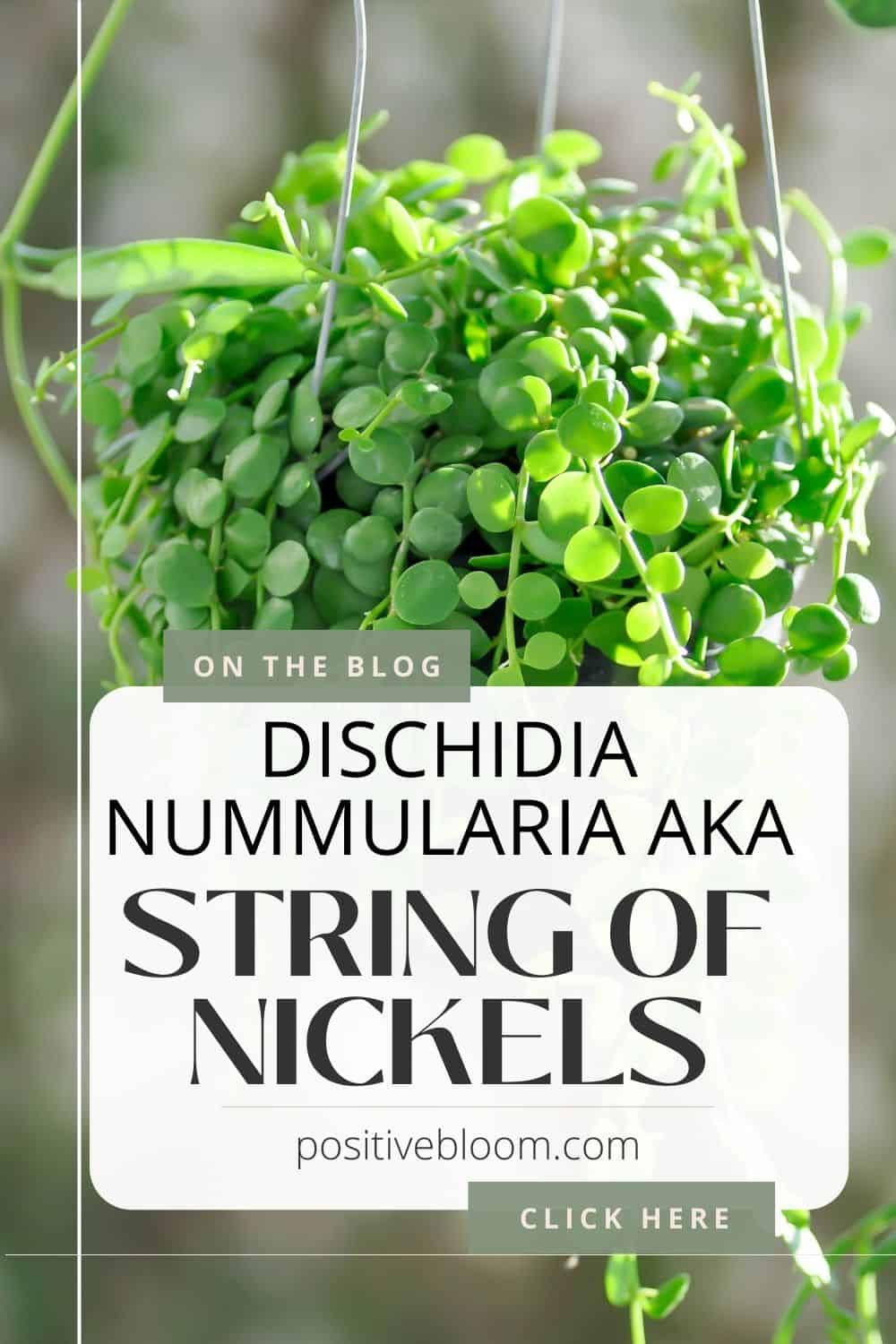If you are looking for an unusual and magnificent plant for hanging baskets, I have the perfect plant for you! Meet the Dischidia nummularia, a lovely variety from the Dogbane family.
The plant is uncommon and has low care requirements, so every gardener, including novices, should have one in their plant collection.
Its unique round leaves and climbing growth habit have made this plant very popular.
In this article, I’ll tell you more about the features of the string of nickels plant, its care requirements, and how to propagate it. Additionally, I’ll tell you more about problems you may face when cultivating this plant.
Before I move on, here’s some basic info about the Dischidia nummularia, aka button orchid.
[table id=577 /]
Let’s get started!
What Is The Dischidia Nummularia?
Hailing from the tropical parts of Australia and Asia, the nummularia plant has become one of the most desired houseplants in the world.
It belongs to the Dischidia genus, along with the well-known Dischidia ovata, aka watermelon Dischidia, and Dischidia ruscifolia, aka million hearts plant.
The Ovata plant is frequently mistaken for a Hoya, but the nummularia is easily recognizable.
Just like its cousins, the nummularia is easy to maintain, making it perfect for beginner growers.
This tropical plant is an epiphyte, which means it gets food and water from the surrounding air.
The leaves are round-shaped and resemble coins, which is the main reason the plant is known as the string of nickels. Don’t confuse nickels for coins in this case, since there is a plant called String of coins, and it’s not related to Dichidia.
The standard variety features yellowish-green foliage. The Dischidia nummularia variegata, aka variegated string of nickels, is a new cultivar that features whitish-green variegated foliage.
This Dischidia plant can reach about 18 inches in length and can spread up to 24 inches.
Nummularia plants produce yellow and white flowers, but the main accent is on the foliage because the blossoms are rather inconspicuous.
String Of Nickels Plant Care Guide
Luckily, Dischidias don’t need much to thrive. Bright indirect light, warm temperatures, moderate humidity, and well-draining soil will ensure the healthy growth of your nummularia plant.
Let’s get into details!
Light Requirements
The Dischidia nummularia performs best in bright indirect light. You can put it next to a window with eastern or southern exposure when growing it as a houseplant.
If your Dischidia receives too much sun, you can filter the sun rays by putting sheer curtains over the windows.
Another way to protect your nummularia plant from harsh sunlight is by moving it a few feet away from sunny windows.
Low light won’t affect the string of nickels growth, but some bright light is necessary throughout the day.
Dischidia plants tend to get leggy if they lack sunlight, but you can always use artificial lights.
Temperature Requirements
The nummularia plant is native to tropical areas like Thailand and Singapore, so it can’t withstand low temperatures.
If you live in USDA growing zones 10 or 11, you can grow a Dischidia nummularia outdoors. This means temperatures lower than 40 degrees Fahrenheit are out of the question.
To encourage the healthiest growth, aim for a temperature range of 55-90 degrees Fahrenheit.
If exposed to sudden temperature changes or cold drafts, your string of nickels will go through shock and display poor growth.
Find a spot far from air conditioners, heaters, or drafty windows.
Humidity Requirements
If you decide to grow the nummularia as an indoor plant, you don’t have to worry much about humidity levels, as its requirements are only moderate.
If you live in an arid climate, you can raise humidity using a humidifier or DIY methods such as pebble trays or misting.
Be careful when misting your Dischidia nummularia; don’t let water sit on the leaves because they could quickly rot. You can also use rice water for your plant when misting.
Even if your household has high humidity, this epiphytic plant will still grow pretty well.
The Ideal Potting Mix
Nummularia plants thrive in loose, fertile, and well-draining potting soil.
Your growing medium should include materials such as coco chips, perlite, and orchid bark. Sphagnum moss is another material you can use in a potting medium.
The essential thing is not to use heavy soil types, as the plant is succulent and prone to root rot.
Watering Needs
You’ll need to keep the soil of your nummularia moist all the time. You can add water when you notice the top 2 inches of the potting medium are dry.
String of nickels plants won’t tolerate long periods of drought. Overwatering is more dangerous for this Dischidia plant than underwatering.
This epiphyte absorbs moisture from the air through its foliage, so you can mist it to aid absorption.
I recommend using the top watering method for your nummularia; keep pouring water over the topsoil until you see water going out through the drainage holes.
Your Dischidia nummularia will enter dormancy over winter, so you don’t need to irrigate it much.
Fertilizing Type And Schedule
Luckily, these succulent plants aren’t heavy feeders. As long as their potting medium has enough organic matter, nummularia plants will flourish.
You can add a balanced fertilizer when the string of nickels growing season begins.
As mentioned, Dischidia plants rest during winter, so feeding isn’t necessary.
Repotting
The Dischidia nummularia plant doesn’t like being root bound. I highly recommend repotting it once a year to encourage new growth and enhance air circulation within the soil.
You’ll get the best results if you use a high-quality and fresh potting medium for your nummularia each time you repot.
The growing season starts in the early spring, so I recommend repotting your nummularia plant then. This is the easiest way to avoid shock.
Dischidia Plant Propagation
Growers prefer using stem cuttings for string of nickels plant propagation. This is a simple process since no cuttings are required.
Let’s look at the steps to better understand it.
Put a soil mix made specifically for this Dischidia plant in a new pot. (Ensure that it is adequately moist as this can aid in propagation.)
Take the tip of your nummularia plant cutting and secure it to the ground with wire or some other object. Your string of nickels will quickly form new roots if the leaf node is in the soil blend. As soon as new roots appear, you can clip the stem that binds the two plants together.
New leaves will start to appear soon, letting you know the propagation was successful.
Another way to get new nummularia plants is to save the clipping after pruning.
Common Issues
Dischidia plants are easy to maintain. Still, some pests and diseases can appear, but there’s no need to worry if they are treated in time.
Let’s see the most frequent pests and diseases that affect button orchid plants.
Pests
Some common houseplant pests, such as aphids, spider mites, and mealybugs, won’t skip your nummularia plant if they’re nearby.
I recommend you always use the most natural solutions to control pests.
You can remove many pests by placing your button orchid under a moderate stream of water. You can also remove them with your hands if you aren’t squeamish.
If you aren’t facing a severe infestation, you can also rub the nummularia foliage with rubbing alcohol.
If there are many pests on your plant, I recommend using neem oil or insecticidal soap.
Diseases
The prevalent disease that affects the breathtaking Dischidia nummularia plant is root rot. This disease is brought about by overwatering in most cases.
Yellow leaves, poor growth, wilting, soggy soil, and a rotten odor emanating from the container are the most frequent symptoms of root rot disease.
If you observe these signs, remove your nummularia plant from its container, wash the roots to expose all the infected areas, and then start pruning.
Remove any dark, mushy, or damp roots, and spray the remaining ones with a fungicide to stop the illness from returning.
Repot your string of nickels in a fresh potting medium.
Make sure all conditions are correct and water your nummularia when the topsoil dries out.
FAQs
Is the Dischidia nummularia toxic?
Nummularia plants are considered non-toxic to humans and pets. This is another excellent feature of this lovely plant, as you don’t need to worry if your children, cats, or dogs nibble on the leaves.
Is the Dischidia nummularia rare?
Yes, the Dischidia nummularia, aka string of nickels, is a pretty rare plant from the Apocynaceae family. It has unique foliage and low care requirements, so if you come upon it, don’t miss the chance to purchase and propagate it.
Wrapping Up
Dischidia plants adorn households and outdoor gardens all around the world. Each species has some unique features, but all plants from this genus have one thing in common; they are easy to maintain!
The Dischidia nummularia is a lovely plant with an unusual appearance. It will make an attractive addition to indoor plant collections or outdoor gardens in USDA zones 10 and 11.
You can combine it with other Dischidias, such as watermelon Dischidia and the million hearts plant. But it will definitely steal the show if grown near other common houseplants such as Philodendrons or Curio plants.
Until next time!
Like this post? Share or pin it for later!

